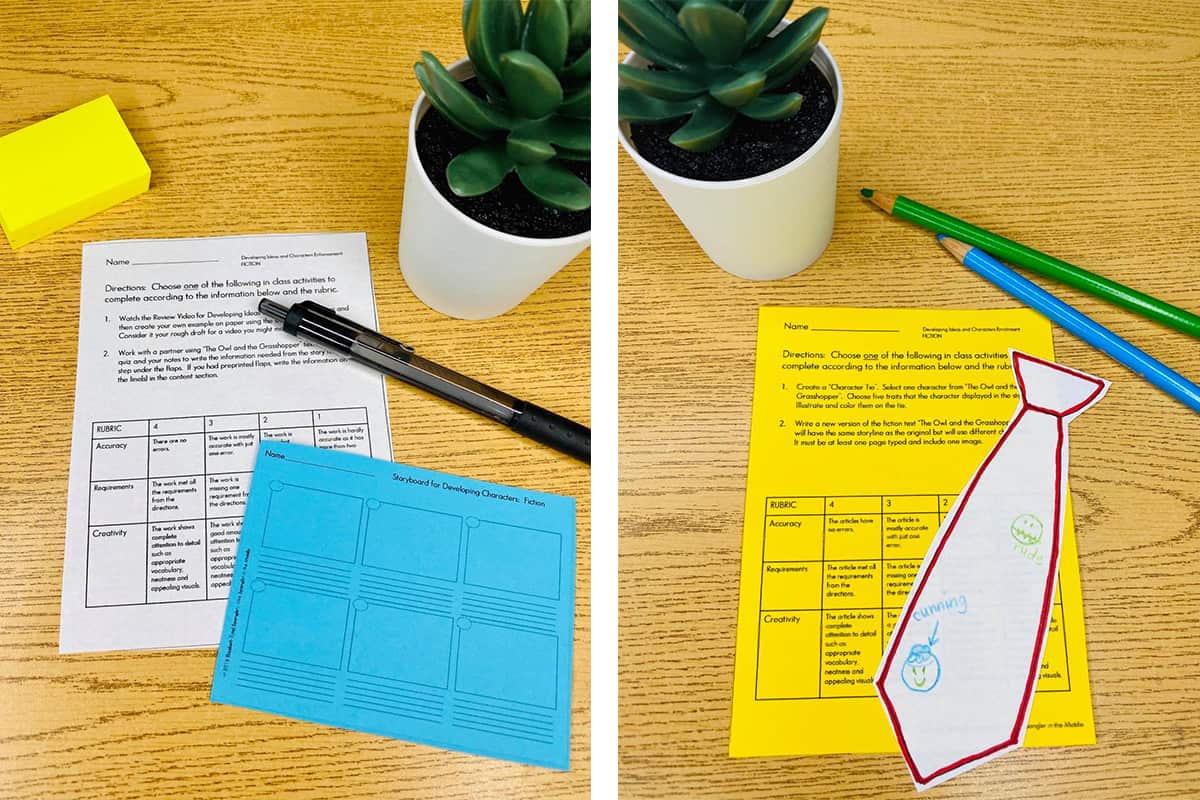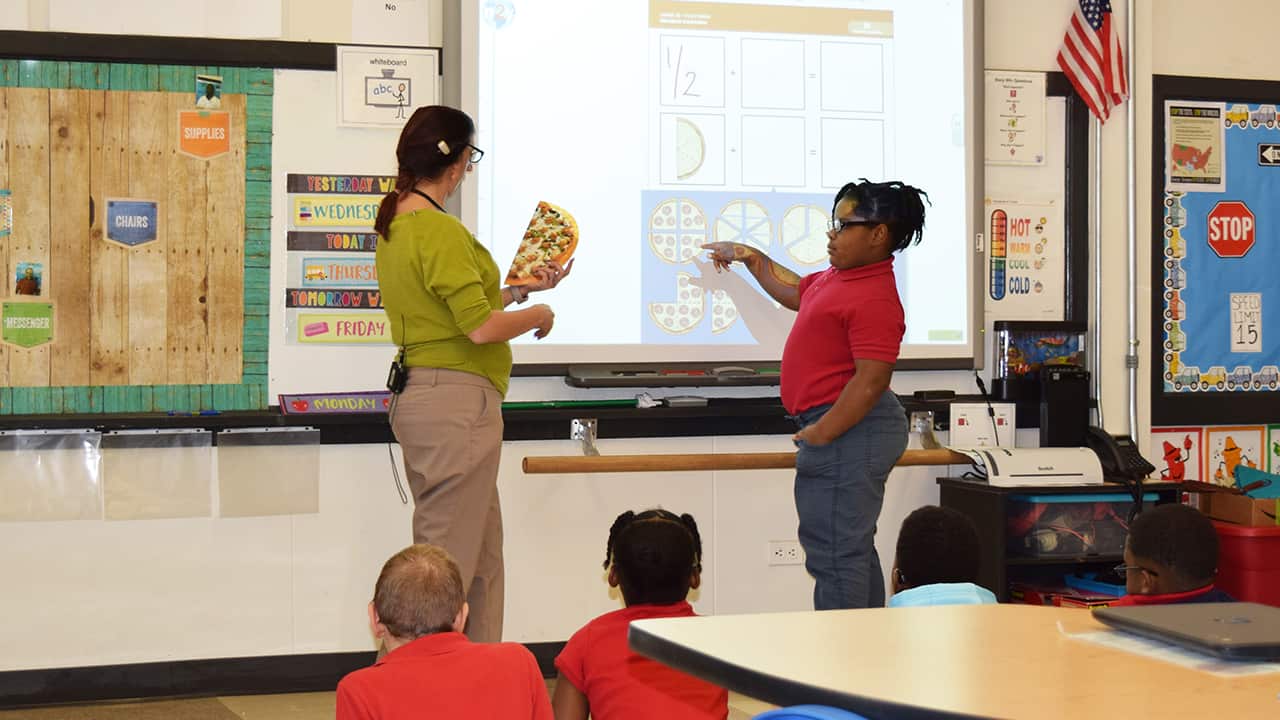Of course, we did not focus on just any character; we looked at a main character who was either the protagonist, the leading character in the story, or the antagonist, the adversary of the protagonist. In doing so, my students immediately became more invested in the intricacies of each character’s journey.
While my struggling students have some basic understanding about characters, they really don’t know how to use what they know to analyze texts. So that’s why for almost every reading skill on which we work, I provide my students with some background and a step-by-step pattern they can follow to use the skill. It’s one thing to know some information about characters; it’s another to be able to apply what one knows to examine how a character changes.
Supplying Background
By background, I mean a little exploration of some of the key ideas and/or terms relating to character development. Probably most students have basic knowledge of what a character is and how one functions in a story, but do they know that a character can be complex, static, or dynamic? Do they understand that development means change? These are the kinds of concepts I make sure to go over first. This ensures students have a firm foundation from which to build.
My 3-Step Process
In my class, after we finished with some background, we read the short story “Lamb to the Slaughter.” Then we analyzed it using the following steps one at a time, making a set of notes with a whiteboard (example conclusions follow each step).
1. Determine who the story is about (Protagonist? Antagonist?). Is the character complex, static, or dynamic?
The story is about protagonist Mary Mahoney, who is a dynamic and complex character. She is dynamic because she experienced a change. In the beginning of the story she was a victim. At the end of the story she was not. She is complex because she has many different traits.
2. Determine what the character did or said.
Mary Maloney killed her husband and then talked with the grocer and the police as if she were innocent
3. Determine what change occurred as a result of what the character did or said.
Based on what Mary Maloney did and said, she changed from being a sweet and innocent victim to something more sinister.
Now that the students had some experience with these three steps, they needed some practice. Students were given a menu with two options to choose from so they could practice using the steps from their notes. One choice was for students to complete a graphic organizer of the steps, and another choice was for them to create a visual representation of the steps as they applied to the story. This provided the students with an opportunity to revisit the steps and process them with a partner or on their own.
Checking Student Understanding and Differentiating Instruction

The next step was a quiz on a different story. Students who scored 80% or better were given an enrichment menu with two choices that allowed them to use their skills to create something new based on the story from the quiz. One choice asked students to illustrate the steps, and the other asked them to write a new version of the text with the same characters but show character development (change) in a new way.
Students who scored below 80% were given an enhancement menu that also gave them two choices based on the story from the quiz, but these were designed to help reteach or remediate the skill. One choice asked students to watch a video of the steps and then create an example like the one presented in the video. The second choice asked them to analyze the story from the quiz using their notes in the same manner that we analyzed “Lamb to the Slaughter.”
This way every student in the class received a menu, and although the choices were different on the two types, the menus looked almost identical. I only had one or two students ask me why their menu was different from their neighbor’s, to which I simply responded, “Everyone gets the menu they need.” Similarly, if someone wanted the other menu, I responded with, “That’s not the menu you need.” They seemed to accept this because it was not based on rank and did not make it seem as though anyone was getting anything better than someone else, just different choices.
Conclusions
Using this process where students took notes, practiced, were assessed, and then either had an opportunity for enrichment or remediation based on their needs allowed for a high degree of differentiation. The step-by-step blueprint for following character development showed them how to apply their knowledge when analyzing a text. Having multiple ways to process the information and respond to enrichment or remediation activities made it possible for students to take their learning into their own hands. As you can see, the three steps in combination with the differentiated instruction made this a rewarding experience because everyone could get what they needed to be successful.


